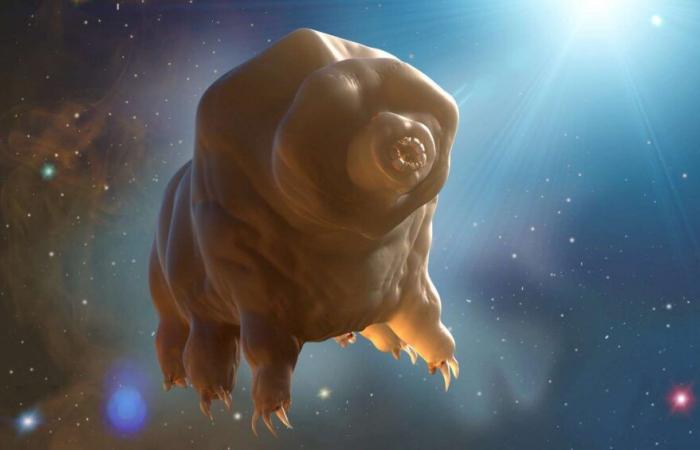
Tardigrades, these microscopic animals that look like little eight-legged bears, are known for their astonishing ability to withstand extreme environmental conditions (radiation, space vacuum, temperatures, etc.). By studying a new species of tardigrades, a team of Chinese scientists has just identified the genes responsible for their resistance to radiation. They hope that their research can contribute to improving the living conditions of astronauts.
Tardigrades, also called “ water bearswater bears ”, are microorganismsmicroorganisms incredibly durable. With an average size of between 0.3 and 0.5 mm, they are capable of surviving in extreme conditions: temperatures close to absolute zeroabsolute zeroradiations, pressionpression very high and even the vacuum of space! These fascinating creatures were discovered in the 17the century and continue to attract scientific interest due to their unique robustness.
Surprisingly resilient creatures
Tardigrades are found almost everywhere on the planet, in very diverse environments, from the peaks of the Himalayas to the depths of the oceans, at all latitudes. Tardigrades are so resilient in part because of a unique property: they are able to enter a state of “dormancy” called cryptobiosecryptobiosewhere they dehydrate almost completely and suspend their metabolismmetabolism. It is this mechanism that allows them, for example, to resist the vacuum of space: in 2007, tardigrades became the first animals to survive in space conditions, with a survival rate of around 68% for a durationduration 10 day exhibition. The maximum duration of their cryptobiosis is not yet known.
In April 2019, a probe took a thousand tardigrades to the Moon, the only known animal resistant to the vacuum of space and lack of oxygen. © France Culture, YouTube
The secret of their resistance to radiation revealed?
A new element has just been added to our understanding of these astonishing creatures: Chinese scientists have identified a new species of tardigrades, named Hypsibius Henanensiswhose genomegenome contains several thousand GenoaGenoa activating when the animal is subjected to radiation. They published their study in the journal Science. After bombing Hypsibius Henanensis of radiation at doses several times higher than lethal doses for humans, scientists observed the activation of nearly 3,000 genes, associated among other things with DNA repair, cell division, and even immune responsesimmune responses.
One of the most active genes, named ADD1appears to allow tardigrades to produce pigments antioxidantsantioxidants called betalains, which can remove some of the harmful chemicals inside cells caused by radiation. When researchers treated human cells with tardigrade betalains, they found that they survived radiation much better than untreated cells. Building on these discoveries, the scientists hope that their work can pave the way for better protection of astronautsastronauts against the constraints of long-term missions.





